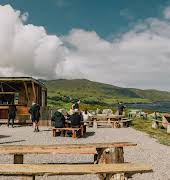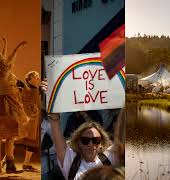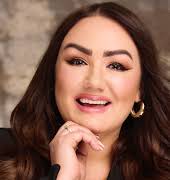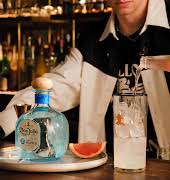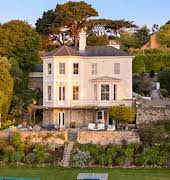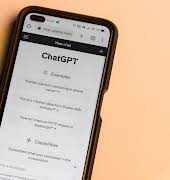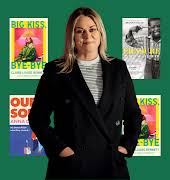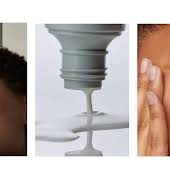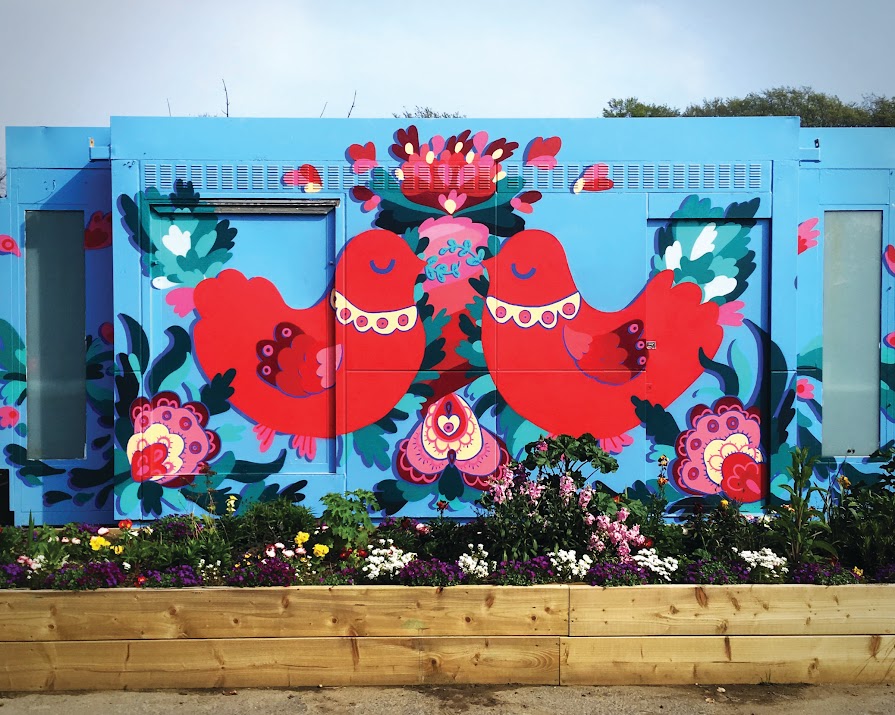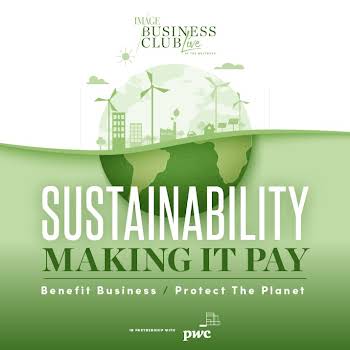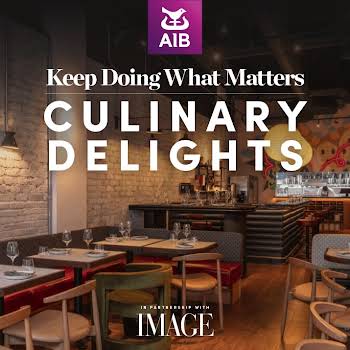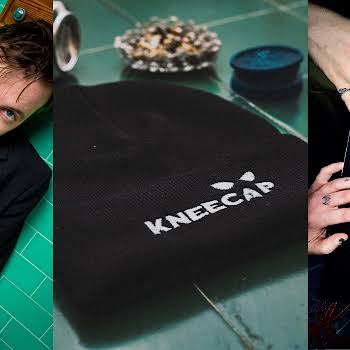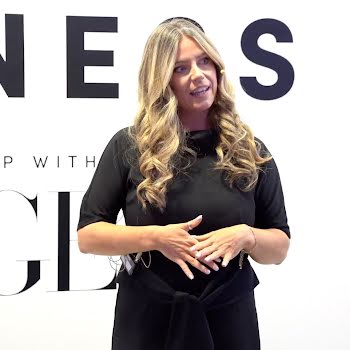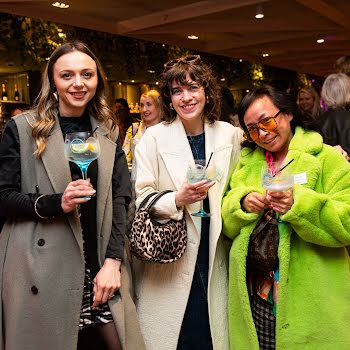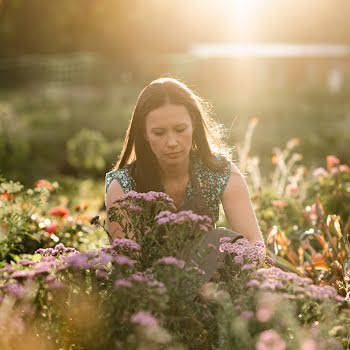By Meg Walker
18th Aug 2019
18th Aug 2019
As they put the final touches on their works for next week’s Waterford Walls International Street Art Festival, artists Holly Pereira and Jess Tobin share their inspirations and tell us how they began leaving their unique mark on Ireland’s walls.

Holly Pereira
Tell us a little about your art background.
I studied sculpture in the National College of Art & Design, graduating in 2004 with a degree in fine art. I practised as a painter for seven years, with exhibitions and residencies in Dublin, London, Berlin and Singapore (where my dad is from). Around 2011, I took a night course in illustration, as I wanted to move my work into a more commercial sphere (I was sick of being a starving artist). In 2013, I went back to college to study animation in Ballyfermot College, and set up as a freelance illustrator in 2015, which I’ve been happily doing ever since.
How did you first get involved in street art?
In 2016, my friend Emma Cafferky and I wanted to paint a pro-choice mural. The discourse surrounding the anticipated abortion referendum was starting to build momentum, and we felt so strongly about this issue that I think it galvanised a lot of people into action. We wanted to create an antidote to some of the pro-life posters around town – to make a visual alternative that both contained a message in an oblique way, and to make a really pretty piece of work to show solidarity with the movement. We, along with John McNaeidhe, painted a mural outside the Bernard Shaw with flowers and text reading “our bodies, our lives, our choice”.

Was street art a big leap from what you were doing before – and can you explain some of the challenges this medium presents?
I have painted and drawn since I was young, albeit on a smaller scale. I would call myself a muralist, rather than a street artist. Painting on walls is one of the oldest forms of art, and I like the connection between cave people and what muralists do now – trying to document our reality and/or fantasies in a large format, visual way.
I found using spray paint really difficult at first. I think I ?only? got to grips with it after a year-and-a-half of using it. I liken it to painting with an unsteady, trundling wheelbarrow. For me, there’s no getting all-Jackson Pollock about it; lashing it onto the wall in mad gestures. It’s controlled, and planned, and methodical, which is what I love about it now. For me, painting murals is about your relationship to the wall, the space around you, and the people and things that inhabit that space.
But it remains that using spray paint is singularly the quickest and easiest way of painting large surfaces with complex imagery. The colours are vibrant and opaque; it dries inside of five minutes, so layering is not a problem. You can also blend and fade it beautifully. But it takes a lot of practice to be even halfway competent – I’m still learning. I’m forever in awe of graffiti writers like Rask, Vents, and Aches – their technique is superb.

What inspires your work?
Words. I love reading, and language, turn of phrase and slang. I think the words we use tell us so much about our society and how we choose to live. I also get terribly excited by colour combinations. An hour looking at chromatic colour swatches in the MRCB paint shop on Thomas Street is time well spent.
Are there other artists whose work you admire?
A comprehensive list would be too long, so I’ll be brief: In terms of street art and murals, the work of both James Kirwan and Myne is something that makes me happy with no idea how to verbalise that happiness, which is what I think the best art does.
Illustrators Jacky Sheridan, Fiona McDonnell and Stephen Maurice Graham in Belfast do some amazing work in the field of comics, zines and animation. Their distinctive styles are so singular, and work on many different levels. We are all part of UsFolk, Ireland’s only illustration agency.
Your work will be part of the Waterford Walls International Street Art Festival, August 22-25 – tell us about the work you’ve done for this, and what you hope viewers will take from it.
Waterford Walls is a spectacular festival, and I love the grassroots element of it. Edel, Gabe, Louise and the team work incredibly hard all year round to create this festival, and it is a legitimate example of excellent community work and high quality artistic projects working in tandem.
Last year, I painted the word “Veðrafjorðr” which is Norse for “Waterford”. I’m fascinated by etymology, and I wanted to highlight the Viking element of the city.
This year, I’m going to be painting another lettering piece, which I hope will engage with viewers in a positive way. In a gallery setting, viewers make a decision to enter the space to see the art. When making work in the public realm, people don’t really have a choice whether to see it or not, which is something that I think is an important consideration.
It brings into focus questions like “what is art?” and “who is art for?”. In Ireland, there sometimes seems to be an old-fashioned attitude about street art, graffiti and murals being antisocial, out of place and offensive; however, I find a lot of the advertising on billboards on the street highly offensive. Who decides what gets to be seen? It sometimes seems that if no revenue can be gained from artwork on the street, then it is of no value.
This is what Waterford Walls do so brilliantly (aside from organising an amazing festival that brings people together) – it makes us question our relationship to art, and each other, and how we represent ourselves, in a really dynamic way. Which is one of the most valuable things about art.
What other artists are you looking forward to catching at Waterford Walls?
I’m a big fan of Nina Valkhoff, so I’m excited to meet her and see how she works; the same with Taquen from Spain. Fellow Minaw Collective artists (a female street art collective of which I am part) Novice, Friz, Signs of Power and Anna Doran will be painting. They are all incredible artists, so I’m looking forward to seeing what they come up with, and having post-paint chats with them.
What other projects are you currently working on at the moment, and how can viewers catch your work in the coming months?
Work/life balance is definitely a skill I need to work on, and, like many self-employed folk, I find it easier to just keep going at breakneck speed. But I realise that ideas and inspiration are not like apples that fall from the tree – I have to do a bit of artistic gestating, get some rest, and fill up the tank, so to speak.
Last February, I curated a type and lettering exhibition called Letterbomb at the Copper House Gallery, which featured the work of 18 sign painters, graffiti artists, illustrators and graphic designers. It was an amazing experience.
I’ll be speaking at the Letters in Design conference on October 10 and 11 in The Chocolate Factory in Dublin, alongside Steve Simpson and Signs of Power. I could talk about lettering and art and meaning indefinitely, so I’m greatly looking forward to that.
Where do you do most of your work, and is there a favourite space or time in which you like to work most?
I work at home, which is great, but can be a bit isolating, so I’m lucky in that half my time is spent on sites painting murals. Best working times for me are mornings, armed with an extremely large mug of coffee.
Are there other mediums/techniques you’re trying/learning at the moment?
I’m trying to extend my illustrated type work to book covers. I think what I do would naturally lend itself well to them, plus I love books (one of my favourite places in Dublin is Books Upstairs on D’Olier Street). I’m currently building my portfolio in line with more of that kind of work. I’m also getting back to animation – drawing pictures is great, but drawing moving pictures is even better.
To young artists thinking about trying street art – what advice would you give them?
Try it. Yes, using spray paint is difficult, but it’s super-addictive and glorious once you get the hang of it. I was 35 when I first picked up a can of spray paint; I wish I’d done it sooner.
The only way to improve is to practise, and I think anyone who paints knows this, so there’s no judging. Be a bit brave and contact someone whose work you genuinely love, ask for advice; maybe even offer to carry their paint and see how they work. The people I have met through painting are really generous with encouragement and advice – it’s a pretty welcoming community.

Jess Tobin
Tell us about your art background.
I have always loved art from a very young age, and it was really encouraged at home. I did two years in BCFE, then did a degree in ceramic design in NCAD, followed a few years later by a GDIP in community art education.
I don’t know about other art students, but I was so depleted after the degree that I was pretty much allergic to art for a good while after.
I was always making stuff during that time, customising clothes, making jewellery and the like, but it was a long time after the degree before I started doing art for myself, from about 2009. A very good mate of mine, Caomhan, told me about Adrienne Geoghegan’s illustration bootcamp. So myself and my sister Sarah went off and did it. That gave me the final kick to get back to doing art for myself. It is also where the Blind Elephant Illustration Collective was born.
How did you first get involved in street art?
I was exposed to it through work I was doing in youth work and took a shine to a spray can and the scale, so I started messing about with it. It was a chance meeting with Evolve Urban Art and an offer of a wall at a Phat Paint Jam that sealed the deal. From there, I took and sought out opportunities and painted when I could.

Was street art a big leap from what you were doing before – and can you explain some of the challenges this medium presents?
The medium was a huge challenge and a massive learning curve (I still have so much to learn). The good thing is that in the beginning, I wasn’t all that self-conscious painting in front of people because I wasn’t that good. There were always people who were way better, painting nearby, who people would be much more interested in.
Initially, I tried to use spray paint as I would a pencil – needless to say, that didn’t work. So through trial, plenty of errors and a lot of help from more experienced artists, I began to figure out how best to use spray paint for my skill level. The great thing about spray paint is that it covers a multitude of sins very easily.
What inspires your work?
I’d imagine there are a lot of subconscious inspirations at play, but colour, composition and faces are the most obvious. I love great clean design too, particularly Japanese print and Danish furniture.
Are there other artists whose work you admire?
I love Stina Persson’s fashion illustrations, and the street art work of Funskull.
Your work will be part of the Waterford Walls International Street Art Festival – tell us about the work you’ve done for this, and what you hope viewers will take from it.
My work is pretty straightforward. I create a design that I like the idea of attempting on a wall and then set about figuring out how to do it. This year, I have a smaller wall, so I aim to challenge myself skill-wise on this. I find bigger easier (spray paint is more challenging for me to use freehand on a small scale), so my challenge is creating a really strong, tight piece that will really pop and have some great details. I hope that people really get enjoyment from my piece. And that it is better than my last. I always hope to improve and move forward.
What other works are you looking forward to seeing at Waterford Walls?
There are so many brilliant artists painting; I am always looking forward to seeing what my friends produce. After Holly Pereira’s killer pieces last year, I cannot wait to see what she is going to do this year. I’m always excited to see what the legend that is Aches has in store. What I really love is getting to hang out with other artists and nerd it up with them about art.
What other projects are you currently working on at the moment, and how can viewers catch your work in the coming months?
I have a few projects bubbling at the moment. My Born Bred Buttered illustrations are for sale in April and the Bear. It started as a commission I offered to East Village Coffee in Clondalkin and was never meant to be a series, but people wanted more, which is really cool. I plan to do a completely new illustration for this series and more places. I will be doing some fun fashion illustration using inspiration given to me by Lema of Pot Bellied Pig. My husband Austin (@InkingCap) and I are in talks to do an exhibition together in our new neighbouring café (there is definitely a café trend emerging… well, I do love coffee). I will also be working with the Bosco Youth Centre on a wall in Drimnagh and hope to get out painting on walls for fun. And myself and Vanessa Power always try to pencil in a few collab walls.
Where do you do most of your work, and is there a favourite space or time in which you like to work most?
Although there is a little studio space at home, because it can get quite cold, I have started to draw a lot more in my sitting room. I do love when I stick on a good podcast or tunes and get so stuck in that I don’t want to stop. What’s seldom is wonderful. I also really love to get to paint a big wall, to spend hours just painting, figuring it out, pulling a piece back from the edge.
To young artists thinking about trying street art – what advice would you give them?
Do it! Get a board and practise like mad; don’t be afraid to put yourself out there and ask for wall spots. People won’t know you exist unless you tell them. Work with experienced artists – there is so much to learn from other artists, never be afraid to ask for tips and advice.
The Waterford Walls International Street Art Festival runs August 22-25, waterfordwalls.ie

